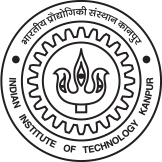
Prerequisites: Chemical Bonding (CHM621) for CHM students. By instructor consent for other department students.
3-0-0-9
Course Contents
- Hartree-Fock (HF) Theory
Born-Oppenheimer approximation, Postulate of antisymmetry, Slater determinants, Slater-Condon rules for matrix elements, Hartree-Fock equations, Koopmans’ and Brillouin’s theorem, Roothaan equations, basis sets, computational aspects: direct and semi-direct methods, Molecular properties, UHF method, Pople-Nesbet equations, limitations of HF theory, MP2 method as a perturbation correction to the HF theory. (10L) - Configuration Interaction (CI) Method
Multi-configuration wave function, full CI matrix, singly and doubly excited CI, illustrations of CI calculations on small atoms/molecules, Natural orbitals, Truncated CI and size-consistency, introduction to coupled cluster theory. (12L) - Density Functional Theory (DFT)
Introduction to electron density and functionals, Hohenberg Kohn Theorems, N- and V- representibility, Levy Functional, Kohn-Sham equations, Electronegativity and hardness in DFT. Discussion of some exchange-correlation functionals, applications. (10L) - Demonstrations, Hands on Sessions and short projects with standard Electronic Structure Programs. (10L)
Topics
Current Course Information
Instructor(s):
Number of sections:
Tutors for each section:
Schedule for Lectures:
Schedule for Tutorial:
Schedule for Labs:
Books and References
Modern Quantum Chemistry, A. Szabo and N. L. Ostlund, Dover, New York (1996).
Density Functional Theory of Atoms and Molecules, R. G. Parr and W. Yang, Oxford University Press, Oxford (1986).
Exploring Chemistry with Electronic Structure Methods, J. B. Foresman and A. Frisch, Gaussian, Inc. Pittsburgh (1996).
A Chemist’s Guide to Density Functional Theory, W. Koch and M. C. Holthausen, Wiley-VCH, Weinheim (2001).
Molecular Electronic Structure Theory, T. Helgakar, J. Olsen and P. Jorgensen, Wiley, New York (2013).



